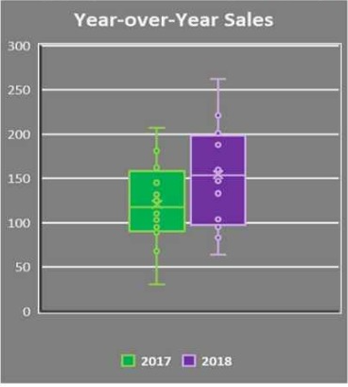IIBA CBDA Exam Questions
- Topic 1: Financial Transactions and Fraud Schemes: This section evaluates your understanding of fraudulent financial transactions in accounting records. You'll need to showcase your knowledge of fundamental accounting and auditing principles, various fraud schemes, fraud deterrence through internal controls, additional relevant accounting and auditing topics.
- Topic 2: Law: This portion examines your grasp of legal frameworks used in prosecuting fraud cases. It also assesses your awareness of the legal implications involved in conducting fraud examinations such as elements of criminal and civil law, evidentiary rules, and legal rights of defendants and plaintiffs.
- Topic 3: Investigations: This domain assesses your proficiency in essential investigative techniques for gathering evidence and identifying fraud perpetrators and it covers effective interviewing strategies, methods for obtaining statements, accessing and utilizing public records, techniques for tracking illicit financial activities Recognizing deceptive behavior, and crafting comprehensive investigation reports.
- Topic 4: Fraud Prevention and Deterrence: In this segment, candidates are tested for their knowledge of fraud motivations and preventive measures such as theories of criminal behavior, characteristics of white-collar crime, patterns in occupational fraud, strategies for fraud prevention, conducting fraud risk assessments, ethical standards as outlined in the ACFE Code of Professional Ethics.
Free IIBA CBDA Exam Actual Questions
Note: Premium Questions for CBDA were last updated On Sep. 07, 2025 (see below)
The definition of data elements is different across various data sources. The organization is looking to improve the usability of data across the organization. Which practice would help address this problem?
Data governance is the practice of establishing and enforcing policies, standards, roles, and responsibilities for the management and use of data across the organization. Data governance helps to address the problem of inconsistent data definitions across various data sources by ensuring that data is properly defined, documented, classified, and aligned with the business objectives and requirements12. Reference: 1: Guide to Business Data Analytics, IIBA, 2020, p. 292: Data Governance: How to Design, Deploy and Sustain an Effective Data Governance Program, John Ladley, 2012, p. 3.
An analytics system is being developed by relying entirely on research questions that are framed using the results from benchmarking. Which research question is being asked?
Benchmarking is a method of comparing the performance of a business with others in the same industry or with industry standards12. It helps to identify areas of improvement and best practices for superior performance34. A research question that is framed using the results from benchmarking would focus on how the company compares to its competitors or to the industry average on a specific metric or process. For example, how efficient is the company compared to its competitors? This question would require the company to measure its efficiency using a relevant indicator, such as cost per unit, time per task, or output per employee, and compare it to the same indicator for its competitors. This would help the company to identify its strengths and weaknesses, and to find ways to improve its efficiency and gain a competitive advantage
A data scientist is performing statistical analysis and is interested in graphically depicting the data set according to the associated quartiles Minimum, First Quartile, Median, Second Quartile, Third Quartile. Which technique would allow for the display of this statistical five number summary?
A box plot is the technique that would allow for the display of the statistical five number summary, because it is a technique that shows the distribution of a data set using a rectangular box and whiskers. A box plot can help the data scientist visualize the minimum, maximum, median, first quartile, and third quartile of the data set, as well as any outliers or skewness. A box plot can also help the data scientist compare the variation and symmetry of different groups or categories of data. Options A, B, and C are not suitable for displaying the statistical five number summary, because they are techniques that show the frequency, relationship, or density of the data, but not the quartiles or outliers. Reference:
* Business Analysis Certification in Data Analytics, CBDA | IIBA, CBDA Competencies, Domain 3: Analyze Data
* Understanding the Guide to Business Data Analytics, page 18
* 16 Best Types of Charts and Graphs for Data Visualization [+ Guide]
An analyst at a bank is trying to identify research questions for an analytical study on top customer issues across branches. During an interview with a branch manager, the analyst asks the manager what their top customer concerns are relating to this branch?
After the manager's reply, the analyst asks a follow up question on how their top customer concerns compare against the top customer concerns across all branches? Was the analyst's follow-up question valid?
The analyst's follow-up question is valid because it helps to refine the scope and context of the research questions for the analytical study. By comparing the top customer concerns across branches, the analyst can identify the common and unique issues that affect customer satisfaction and loyalty. This can also help to prioritize the most critical or urgent problems that need to be addressed by the bank12. Reference: 1: Guide to Business Data Analytics, IIBA, 2020, p. 212: Business Analysis for Practitioners: A Practice Guide, PMI, 2015, p. 43.
- Select Question Types you want
- Set your Desired Pass Percentage
- Allocate Time (Hours : Minutes)
- Create Multiple Practice tests with Limited Questions
- Customer Support

Shawnta
7 days agoLeoma
7 days agoKindra
2 months agoLemuel
3 months agoMarisha
5 months agoChristiane
6 months agoMarti
7 months agoTula
8 months agoIsaiah
8 months agoFrancene
9 months agoCharolette
9 months agoCarli
9 months agoIsaiah
10 months agoEarleen
10 months agoKati
10 months agoShayne
11 months agoEdmond
11 months agoKenda
11 months agoLeota
12 months agoFlorinda
12 months agoFarrah
1 years agoMaurine
1 years agoAlmeta
1 years agoLuisa
1 years agoYvonne
1 years agoAleisha
1 years agoAngelo
1 years agoPercy
1 years agoNickole
1 years ago